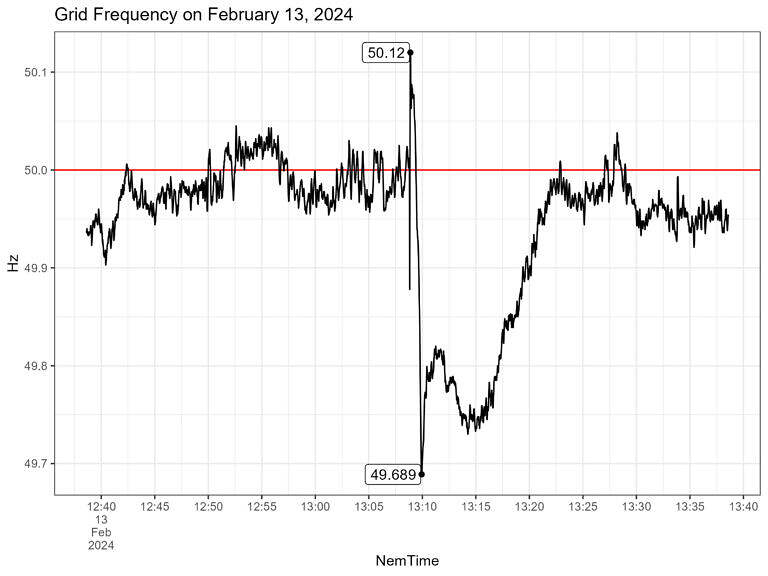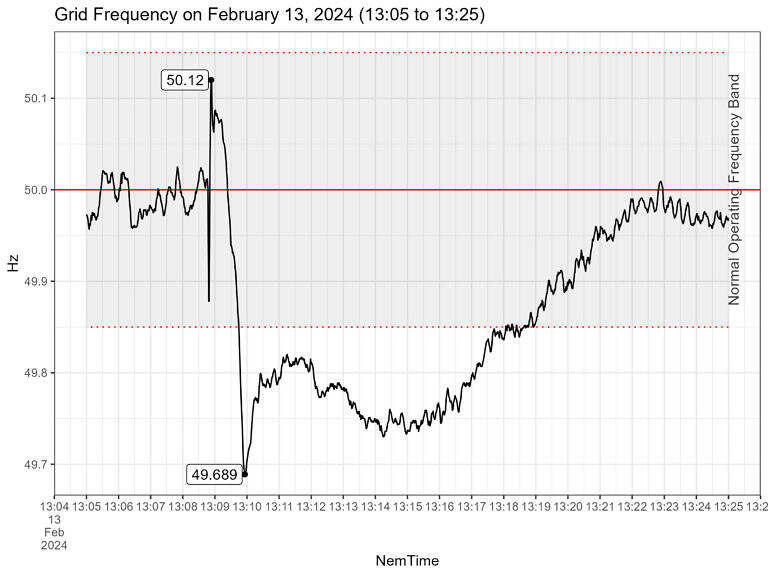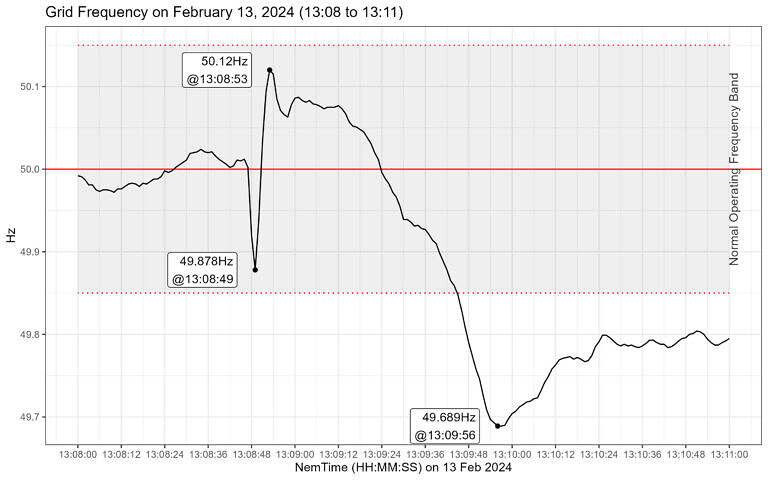This article holds an initial look into grid frequency on 13th February 2024. It may be expanded upon in the future.
The “significant power system event” event was noted in 4 Loy Yang A units simultaneously trip, on Tuesday 13th February 2024, and subsequently in Mainland System Frequency drops through the floor with “Significant Power System Event” on Tue 13th Feb 2024
The following chart of grid frequency recorded on the 13th of February 2024 captures the event, before and after.
Grid frequency dropped to 49.689 Hz. According to our logger this occurred between 13:09:56 and 13:09:57 (NEM time, UTC+10)
Relative to the normal frequency operating band, the excursion below 49.85 Hz lasted about 18 minutes 8 minutes (corrected).
Zooming into the start of the event we see the dip in frequency just before 13:08:48. There was a corresponding correction (was this 1Sec FCAS?) that pushed the frequency above 50 Hz before it slipped again down and outside the lower normal operating band, to the low point of 49.689 Hz at 13:09:56.





The recovery to 50.12Hz would have been the initial fault clearing. The roll-over after that likely would be runbacks/control schemes for windfarms. LoyA units may have (mal)operated on ROCOF after the cascade of frequency.
There may have also been an attempted reclose on both the 500kV lines.
Thanks Liam, I appreciate the input and clarification!
In reference to the frequency deviation, the event lasted ~10 minutes with frequency returning inside the 49.85 prior to 13:20 and then eventually recovering to the 49.9 allowing contingency response to ease. The most interesting part is the swing from nearly under to nearly over frequency back to an under-frequency event.
Thanks Mitch – I’ve corrected my error there (had misread the chart and said 18min, but I agree it was under 10 min – from approx 13:09:44 to 13:18).
I think the initial frequency dip was the initial fault and possible reclose, also possible that voltage harmonics on the signal your system was processing made the dip appear larger than it was.
With so much non-synchronous generation on the NEM nowadays, the rate of change of system frequency for events keeps evolving due to ever continuing lack of inertia imo.
My guess is that LYA holds the current Vic Trip to House Load contract with the NEM, and had all four Units selected active at the time of the event (to enhance the probability that the required minimum generators successfully Island to fullfill the contract obligations).
I believe the rapid ROCOF you have demonstrated above probably triggered the detection relays of all four Units, …..and unfortunately all four failed to Island effectively.
Hopefully the battery systems and EDG’s at the plant stood up to the subsequent Station Black.
My t2 bobs anyway.